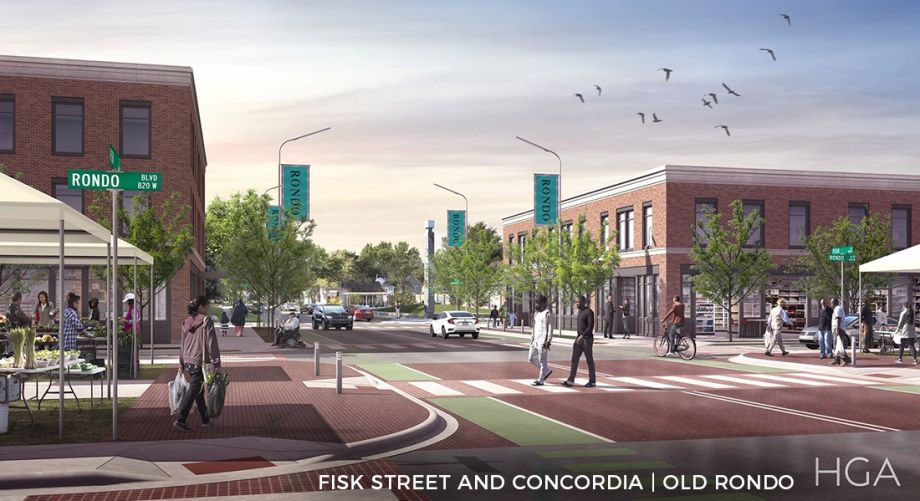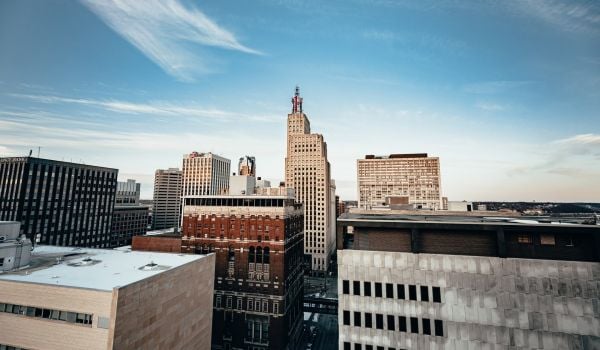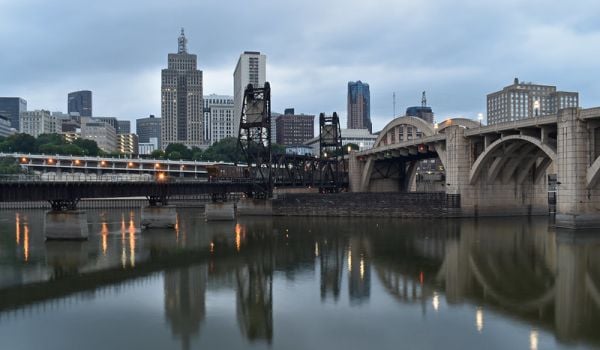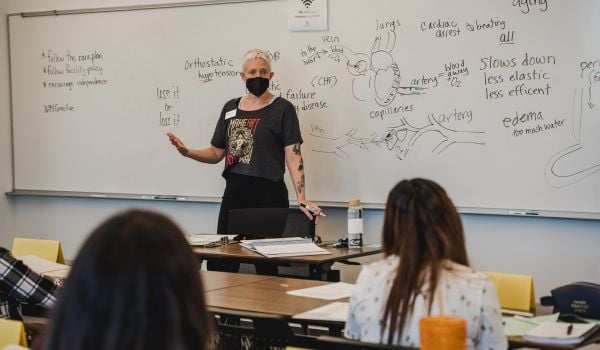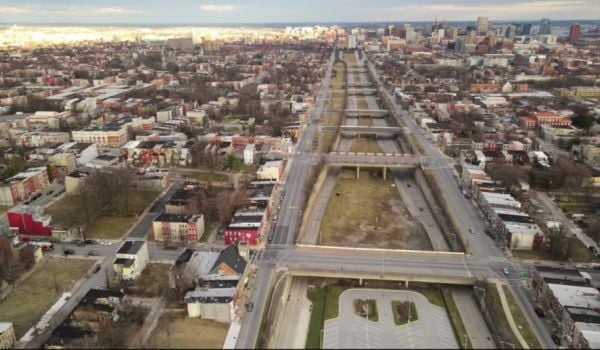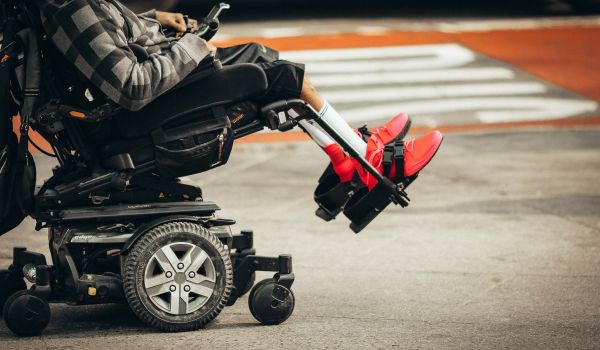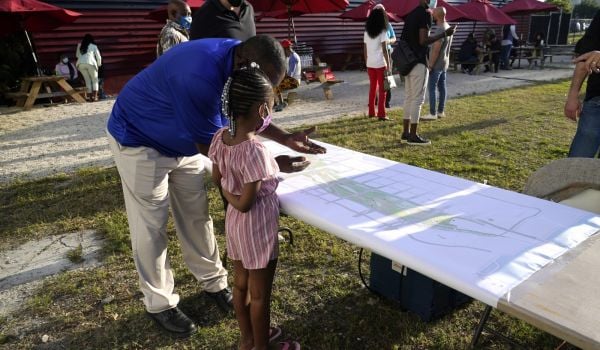Since the late 1800’s, St. Paul’s Rondo neighborhood was a thriving Black community. Churches, businesses, schools, and homes all coalesced into a neighborhood where the majority of the city’s Black residents lived, worked, and worshiped. The tight-knit neighborhood thrived for decades, until the construction of I-94 began slicing through the neighborhood in 1956.
Rondo’s story is anything but unique.
However, there’s a growing movement to begin to right past wrongs caused by highway development. In St. Paul, a group called ReConnect Rondo is working to create a land bridge over the interstate in an effort to reconnect and reinvigorate the community. The bridge will connect both sides of an “African American Cultural Enterprise District,” as the organization says; the bridge itself could include housing, a park, even a performing arts center.
The impetus for what would become ReConnect Rondo began around 2007 during an expansion project for the Twin Cities’ light rail system that brought a new line through St. Paul. “After realizing there were no stops along the route in Rondo, the community organized and demanded stops,” explains Keith Baker, the executive director of ReConnect Rondo. “It’s an illustration of how planning happens with an articulation of community engagement but without a reflection of community engagement.”
The community eventually got three Green Line stops in their neighborhood, with victory leading to more demands for equity. A range of informal conversations about how Rondo can be better served in the future happened at the community level for years up until 2015. That’s when formal apologies for the damage done came from former commissioner of transportation, Charlie Zelle, and former St. Paul Mayor Chris Coleman. “That’s when the idea that some kind of intervention needed to take place along the I-94 corridor,” Baker says, and the earliest version of what would become ReConnect Rondo was born.
According to Ben Crowther, manager of the Freeways Without Futures initiative at Congress for the New Urbanism, communities are often the catalyst for highway removal or mitigation projects.
“In 2015, give or take, we were starting to see the tie-in with the concept of the removal of freeways for economic development with removing freeways as a reparative program,” he says. “They largely start with community-led efforts and … with the recent Biden infrastructure plan, there have been a lot more local elected officials, government officials at the federal and state levels, and members of Congress who are championing this in their own communities.”
Crowther estimates that there are roughly 30 projects around the country, like Connect Oakland, that are doing similar work to ReConnect Rondo.
While ReConnect Rondo is still early in its process, so far Baker has convened a 25-person technical advisory group with experience in transportation, urban policy, and public policy as well as a five-day panel in collaboration with the Urban Land Institute that engaged 125 community members and other stakeholders and experts.
The group also commissioned and published a Past Prosperity impact study which quantified the losses in Rondo. The study found that over 700 Rondo homes were lost to I-94 construction; had those homes not been destroyed, they could have generated $157 million of intergenerational wealth.
The planning work resulted in several recommendations that include moving forward with a land bridge that is 21 acres or more and funding it partially with public money.
“The state has funded projects like US Bank Stadium because there has been business interest,” Baker says, adding that they’re working with U.S. Congresswoman Betty McCollum and Senators Tina Smith and Amy Klobuchar to get federal support for their work.
The land bridge that ReConnect Rondo and the Rondo community propose is one that stretches for several blocks over the interstate and could house everything from a large park and a performing arts center to commercial space alongside multi- and single-family housing. The idea behind the cap is to recreate the land that was lost during the highway’s construction.
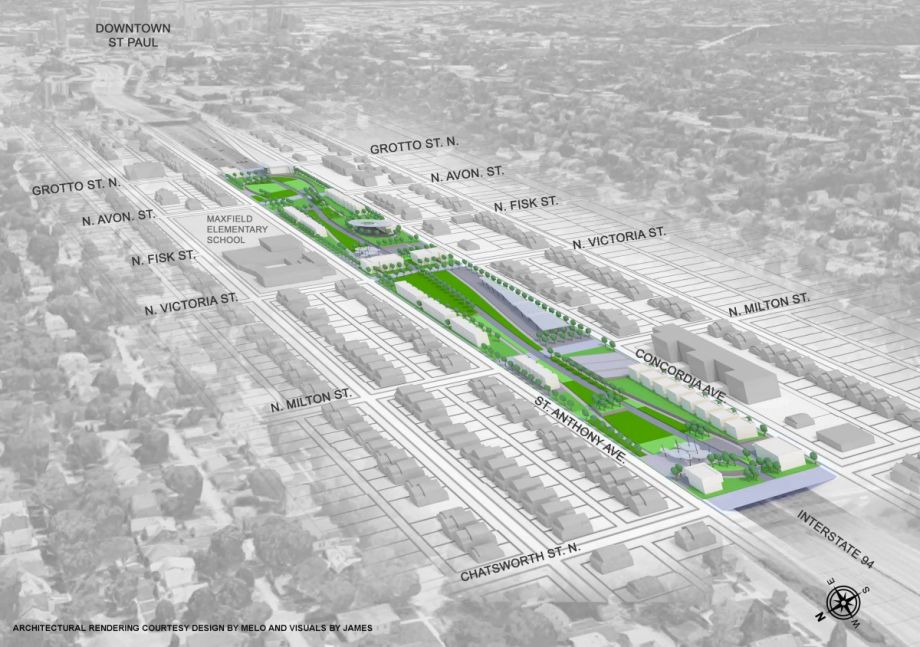
(Courtesy ReConnect Rondo)
As these projects move forward, though, Crowther cautions that “it’s really imperative that we think about who will benefit from these removals, in particular thinking about the potential for displacement through gentrification … otherwise it’s just state-sponsored displacement.”
This is a central concern for Baker and ReConnect Rondo, which is why the group is moving slowly and deliberately through the planning and pre-development phases. It’s currently working to secure funding, with the help of Rep. McCollum, for pre-development work to ensure that the project is planned for and conducted in a way that mitigates gentrification. In an ideal world for Baker, property tax increases would be effectively mitigated or not take place at all.
Moving forward, Baker sees ReConnect Rondo as a gatekeeper that ensures that the Black community is leading the process and that their concerns can be adequately addressed through ongoing community engagement.
Ultimately, “we’re at a really critical time in this county and the country, I believe, is looking for a pathway forward to the future,” Baker says. “We believe that this project represents that.”

Cinnamon Janzer is a freelance journalist based in Minneapolis. Her work has appeared in National Geographic, U.S. News & World Report, Rewire.news, and more. She holds an MA in Social Design, with a specialization in intervention design, from the Maryland Institute College of Art and a BA in Cultural Anthropology and Fine Art from the University of Minnesota, Twin Cities.
Follow Cinnamon .(JavaScript must be enabled to view this email address)

